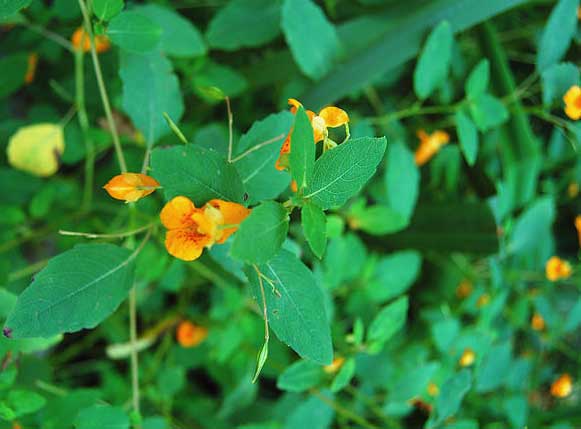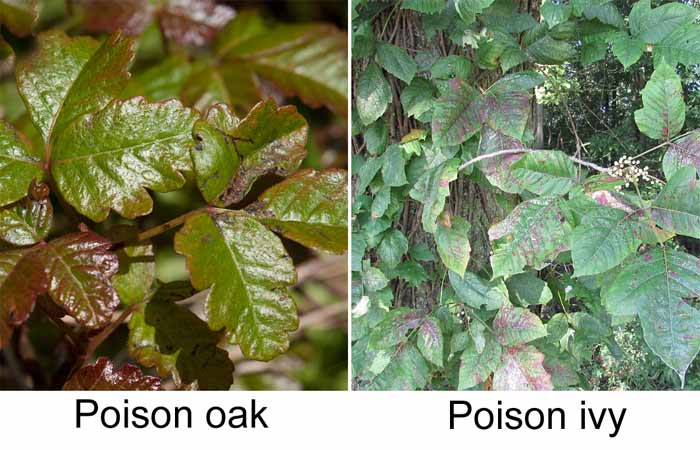Jewelweed in herbal medicine
If you find yourself in poison oak or ivy, look nearby for some jewelweed (Impatiens capensis) and rub the fleshy leaves on exposed or contaminated body parts as soon as possible.

Here in the Appalachian Mountains, jewelweed grows along the road in big mounded bunches. It is lush and green, but usually considered a weed. It does look kind of like a jungle. The flowers are not large or showy, but are very beautiful when viewed up close.
If you are using jewelweed for poison oak or ivy, do it quickly! As soon as you realize that you have touched either ivy or oak, you have to move fast to keep from getting a rash.
Look around for some jewelweed. Grab a handful of the leaves, flowers, and stems.
Crush them between your fingers and apply to exposed skin. You want the jewelweed to do its thing, so it has to be a bit mushy. Some old timers say to chew it first, then spit on to the exposed skin.
If you don't have any jewelweed, get to water as soon as possible (within 10 minutes is best). If you have some water handy, pour it on your exposed skin. If you can, get to a sink and wash for at least three minutes with soap and water. This is the best way to remove poison oils before they do much damage.

Jewelweed can also be used externally to relieve itching. If you have a rash from poison oak or ivy, try jewelweed compresses.
It also works on hives and other itchy skin problems including athlete's feet and fungal infections.
Scientific studies on jewelweed
Tests show that jewelweed mash is an effective treatment to prevent developing poison oak and ivy after exposure. Jewelweed extracts do not have beneficial effects like the fresh leaves.
Tests also show that soap and water is the best remedy for preventing rash after exposure.
More about jewelweed
Jewelweed is also called touch-me-not and orange balsam. Bees, hummingbirds, and butterflies love it.
It is native to North America and grows wild along roadsides and fence lines.
When it is in a moist, partly shady place, jewelweed can grow to five feet tall.
It is a self-seeding annual that grows until frost kills it. You will not find jewelweed once temperature fall below freezing.
Sources:
https://www.fs.usda.gov/wildflowers/plant-of-the-week/impatiens_capensis.shtml
https://pubmed.ncbi.nlm.nih.gov/22766473/
https://pubmed.ncbi.nlm.nih.gov/9249283/
Blessings to you and yours!
Thanks so much for reading my blog. Jan.

*Note - the information on this website has not been evaluated by the Food and Drug Administration.
© 2005-2024 website design and content by Janice Boling